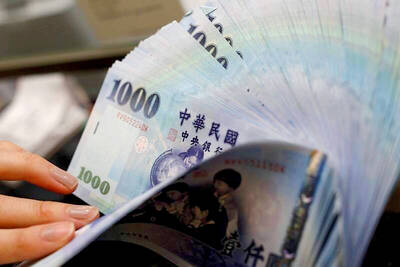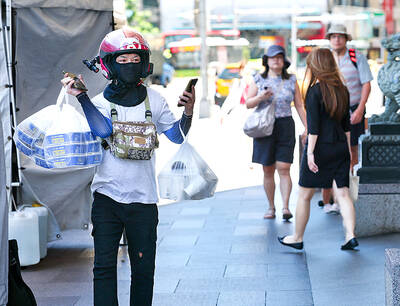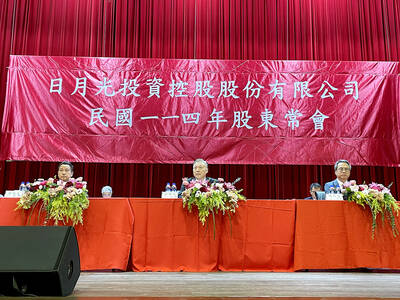IBM chief executive Ginni Rometty pledged to hire and train workers in the US as she and other technology executives prepared to meet yesterday with US president-elect Donald Trump.
“We have thousands of open positions at any given moment, and we intend to hire about 25,000 professionals in the next four years in the United States,” Rometty wrote in a USA Today article published on Tuesday.
IBM spokesman Adam Pratt declined to say how that hiring might be offset by staff reductions or disclose how many people IBM employs in the US.
“We expect to end 2016 with our US workforce about the same size as it was at the beginning of the year. By 2020, we expect it to be larger than it is today,” Pratt said.
IBM had nearly 378,000 employees at the end of last year, according to the company’s annual report.
While the firm does not break down staff numbers by nation, a review of US government filings suggests IBM’s US workforce declined in each of the five years through last year.
VOCATIONAL WORK
In annual US Department of Labor filings, IBM has reported that the active number of participants in its 401(k) pension plan fell to 84,350 last year from 110,876 in 2010.
When asked why IBM planned to increase its US workforce after those job cuts, company spokesman Ian Colley said in an e-mail that Rometty had laid out the reasons in her USA Today article.
Her article did not acknowledge that IBM had cut its US workforce, although it called on US Congress to quickly update the Perkins Career and Technical Education Act that governs federal support for vocational education.
“We are hiring because the nature of work is evolving,” Rometty said.
“As industries from manufacturing to agriculture are reshaped by data science and cloud computing, jobs are being created that demand new skills — which in turn requires new approaches to education, training and recruiting,” Rometty said.
She said IBM intended to invest US$1 billion in the training and development of its US employees over the next four years.
Pratt declined to say if that represented an increase over spending in the previous four years.
Rometty is one of more than a dozen US executives serving on an advisory council that Trump has formed to consult him on job creation.

Merida Industry Co (美利達) has seen signs of recovery in the US and European markets this year, as customers are gradually depleting their inventories, the bicycle maker told shareholders yesterday. Given robust growth in new orders at its Taiwanese factory, coupled with its subsidiaries’ improving performance, Merida said it remains confident about the bicycle market’s prospects and expects steady growth in its core business this year. CAUTION ON CHINA However, the company must handle the Chinese market with great caution, as sales of road bikes there have declined significantly, affecting its revenue and profitability, Merida said in a statement, adding that it would

RISING: Strong exports, and life insurance companies’ efforts to manage currency risks indicates the NT dollar would eventually pass the 29 level, an expert said The New Taiwan dollar yesterday rallied to its strongest in three years amid inflows to the nation’s stock market and broad-based weakness in the US dollar. Exporter sales of the US currency and a repatriation of funds from local asset managers also played a role, said two traders, who asked not to be identified as they were not authorized to speak publicly. State-owned banks were seen buying the greenback yesterday, but only at a moderate scale, the traders said. The local currency gained 0.77 percent, outperforming almost all of its Asian peers, to close at NT$29.165 per US dollar in Taipei trading yesterday. The

RECORD LOW: Global firms’ increased inventories, tariff disputes not yet impacting Taiwan and new graduates not yet entering the market contributed to the decrease Taiwan’s unemployment rate last month dropped to 3.3 percent, the lowest for the month in 25 years, as strong exports and resilient domestic demand boosted hiring across various sectors, the Directorate-General of Budget, Accounting and Statistics (DGBAS) said yesterday. After seasonal adjustments, the jobless rate eased to 3.34 percent, the best performance in 24 years, suggesting a stable labor market, although a mild increase is expected with the graduation season from this month through August, the statistics agency said. “Potential shocks from tariff disputes between the US and China have yet to affect Taiwan’s job market,” Census Department Deputy Director Tan Wen-ling

UNCERTAINTIES: The world’s biggest chip packager and tester is closely monitoring the US’ tariff policy before making any capacity adjustments, a company official said ASE Technology Holding Inc (日月光投控), the world’s biggest chip packager and tester, yesterday said it is cautiously evaluating new advanced packaging capacity expansion in the US in response to customers’ requests amid uncertainties about the US’ tariff policy. Compared with its semiconductor peers, ASE has been relatively prudent about building new capacity in the US. However, the company is adjusting its global manufacturing footprint expansion after US President Donald Trump announced “reciprocal” tariffs in April, and new import duties targeting semiconductors and other items that are vital to national security. ASE subsidiary Siliconware Precision Industries Co (SPIL, 矽品精密) is participating in Nvidia